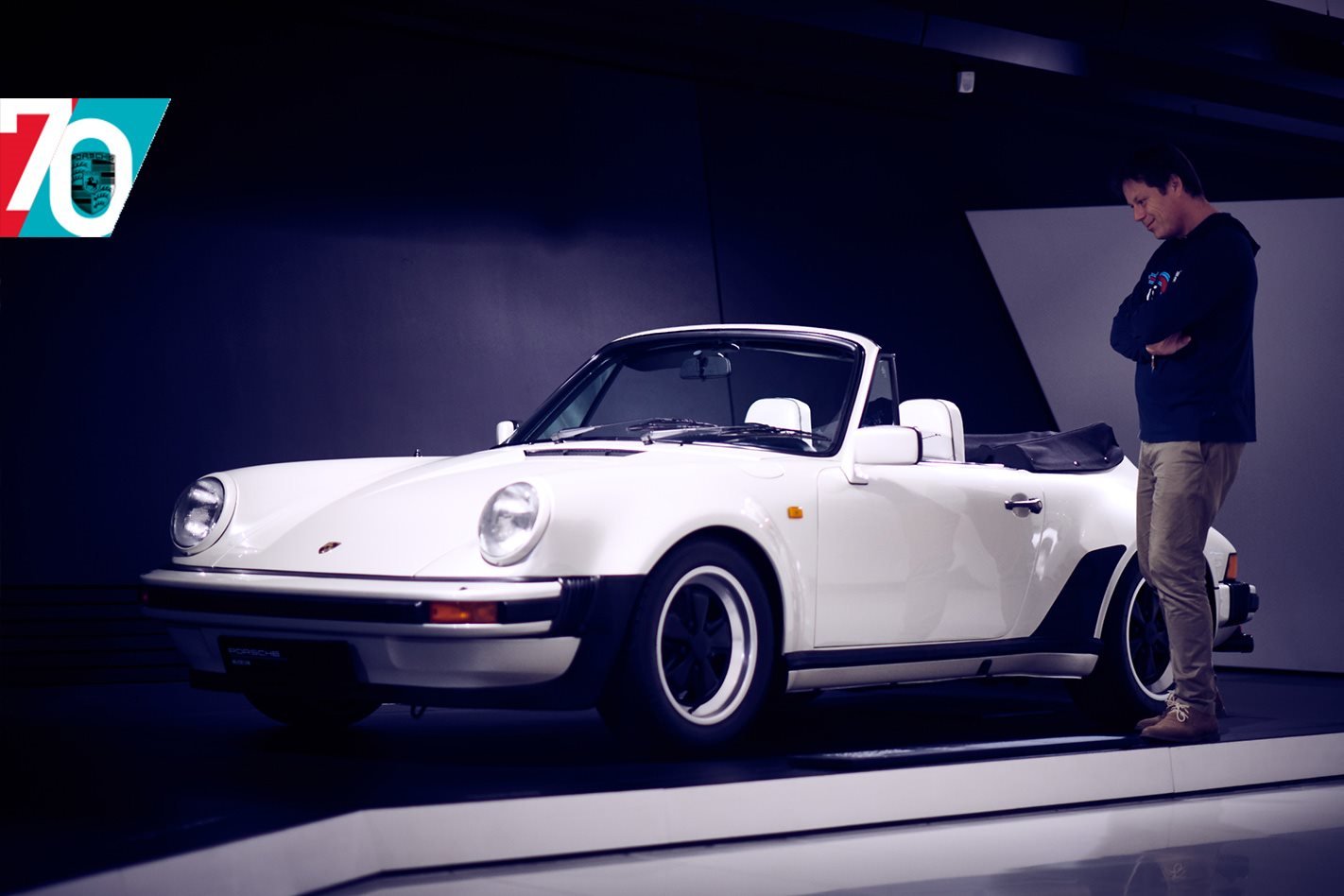Porsche’s 70th birthday sees the marque in ruder health than ever before. Wheels celebrates the company’s seven decades of engineering excellence forged on road and track.
IT’S EASY to get overwhelmed at the Porsche Museum. The public have left the building and we’re led from the foyer through a labyrinthine series of elevators and corridors, all finished in unadorned white, to a set of double doors. Our guide swipes her fob on the wall and there’s a momentary pause. The doors swing open and there right before us is a plain black Beetle. Behind it is a 1939 Type 64 body, and peeking through a far set of stairs are racing 911 RSRs and 936s. A Paris Dakar 911 and a race 944 to the left, the second 356 ever built to the right. For a moment, I’m a bit overloaded and just gawp, head swivelling in disbelief.
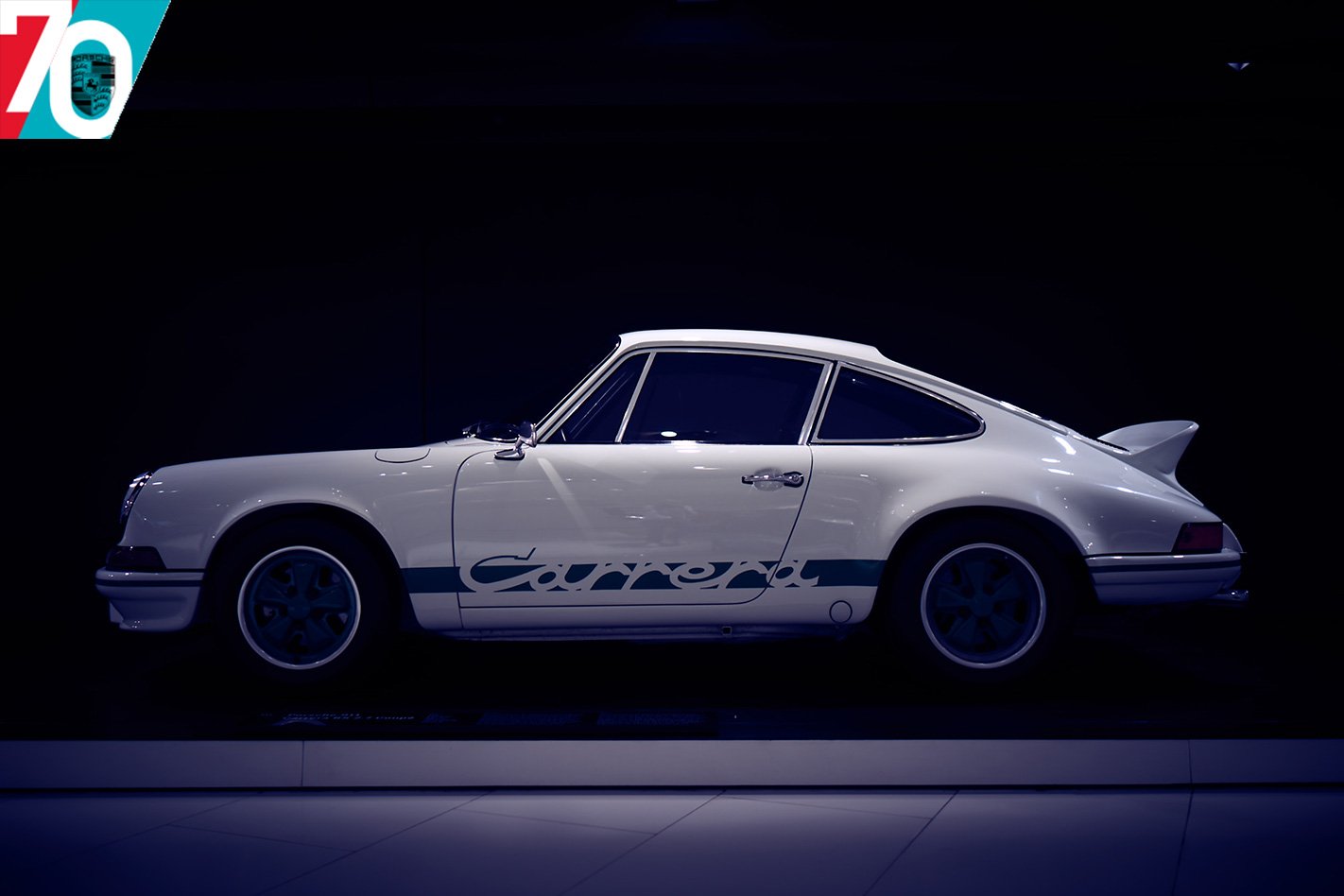
Photographer Jahn’s a regular here and he’s straight into it, but I need a moment. Our guide asks if we’re okay and then leaves. They genuinely have left us alone in here with these priceless cars. Kid, meet candy store. There’s a certain flow to the 80 cars on show, starting with the earliest and spiralling up three levels to the most recent, represented by the current production car range, the 918 Spyder hypercar and the 919 Le Mans winner.
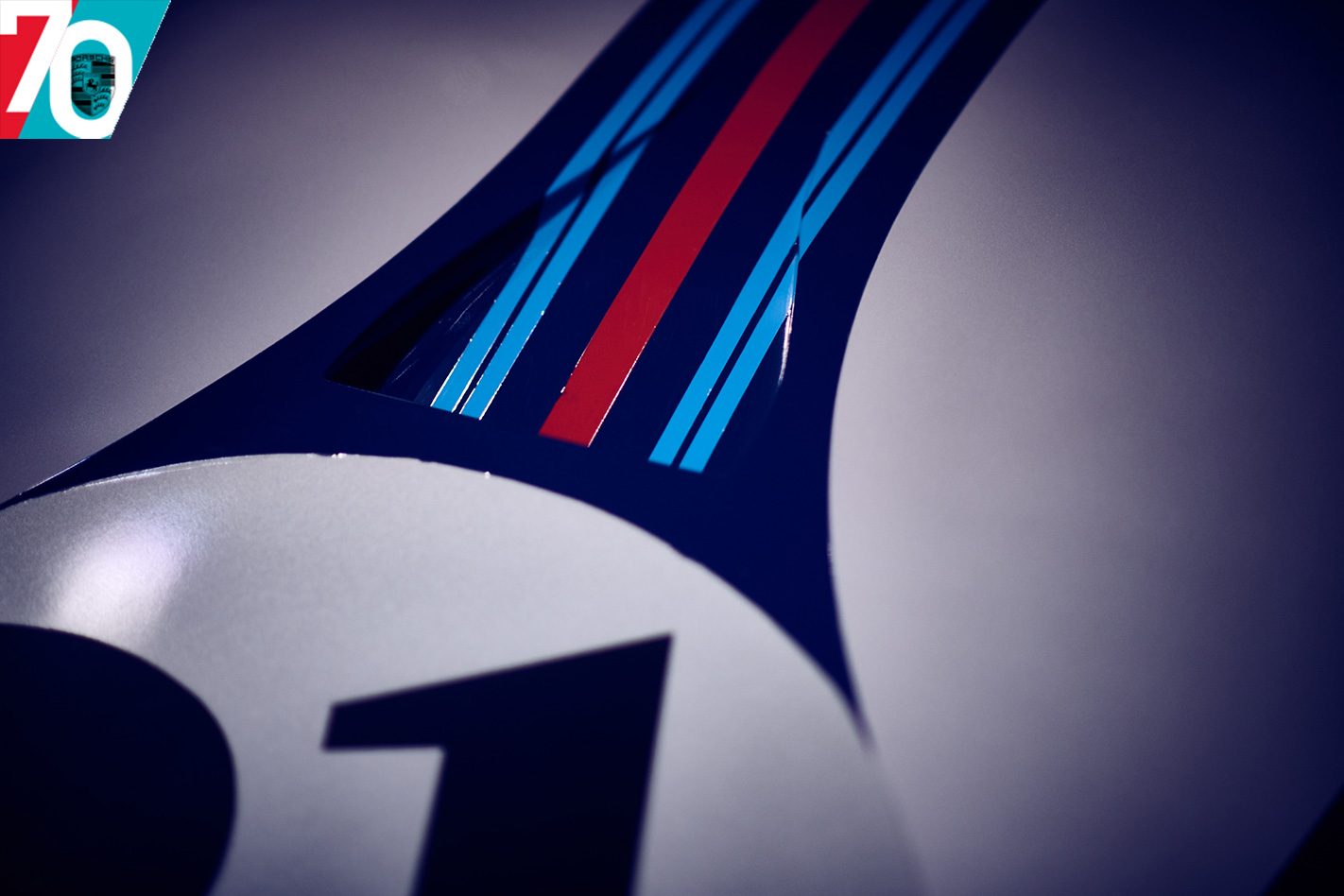
My footsteps ring out on the white marble floor tiles as I walk to the front of the museum and look out. Daylight is fading at the picture windows and lights blink on in the apartment blocks of this eastern suburb of Stuttgart. Commuters head home on the dual carriageway. I’m watching them while sitting on the rear tyre of Alain Prost’s McLaren MP4/2C F1 car, powered by Porsche. I look into the cockpit, keen to see what The Professor would see out of the car. Just one gauge, marked to 12,000rpm, a Personal steering wheel and a burnished gear lever at his right hand. It smells slightly funky, some biological top notes among the oil and rubber.
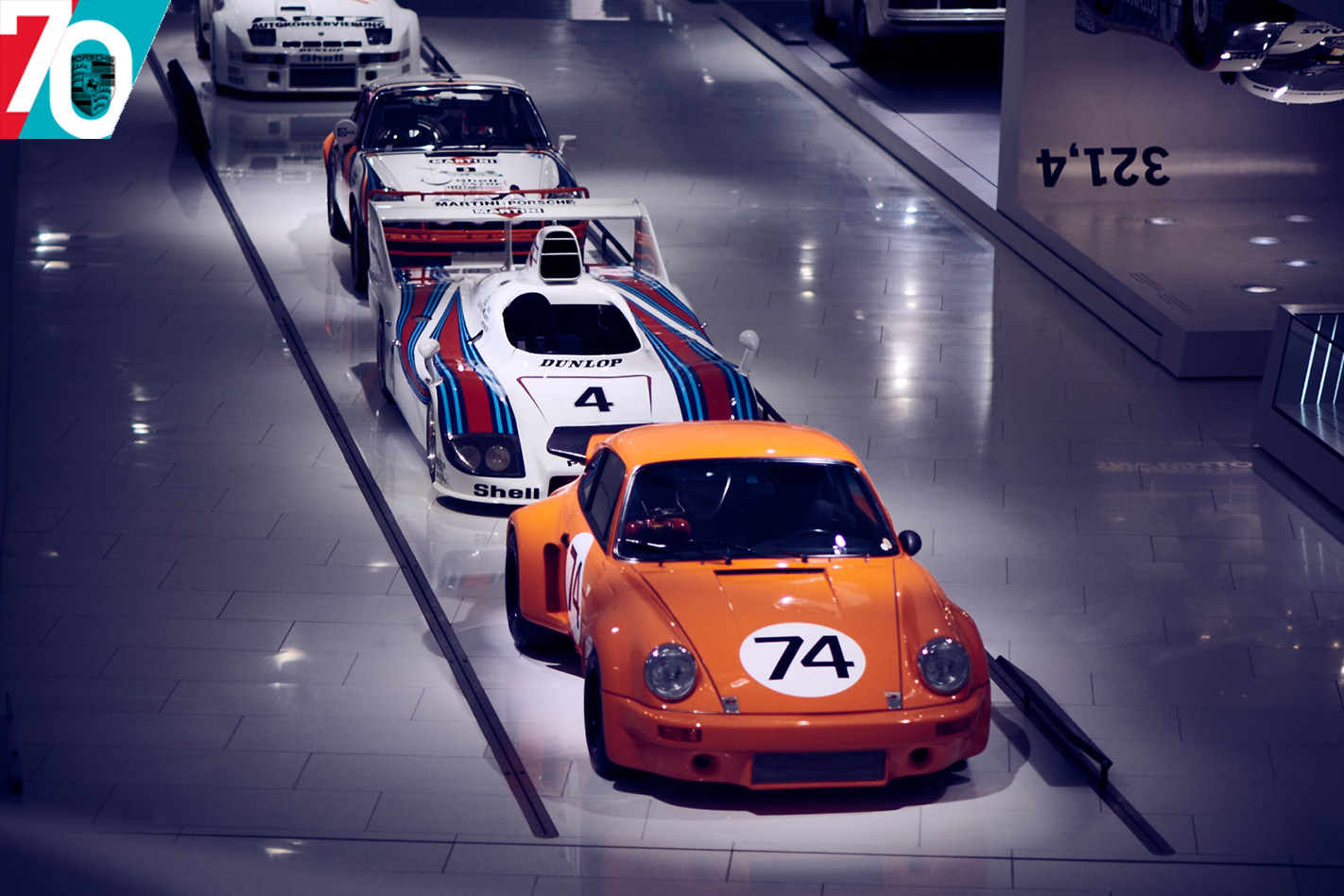
Start walking clockwise and you’ll tick back in time through Porsche’s competition cars. The 919 looks like some giant carbon sarcophagus, pure function, awesome in its purposeful ugliness. The RS Spyder is its antithesis, all primary colours and open cockpit. The brake dust from the 911 GT1 is still baked hard onto the louvres on its front wheel arches. It’s been there for 20 years since this car raced at Le Mans, deposited there by Bob Wollek on the big braking zones at Arnage and Mulsanne.
Underscoring Porsche’s competition success is a vast forest of trophies suspended on wires. There’s the dainty little opal headscarf for the Paris Dakar, the big bowl of the Mille Miglia and there in the centre is the trophy awarded to Le Mans 24 Hour winners. I feel compelled to touch it, this thing lifted by Carroll Shelby, Bruce McLaren, Jacky Ickx, Derek Bell, Graham Hill and countless other legends of the sport. The engraved panel only runs to Mike Hawthorn’s win in 1955, but the names prior to that include Nuvolari, Veyron and Barnato.
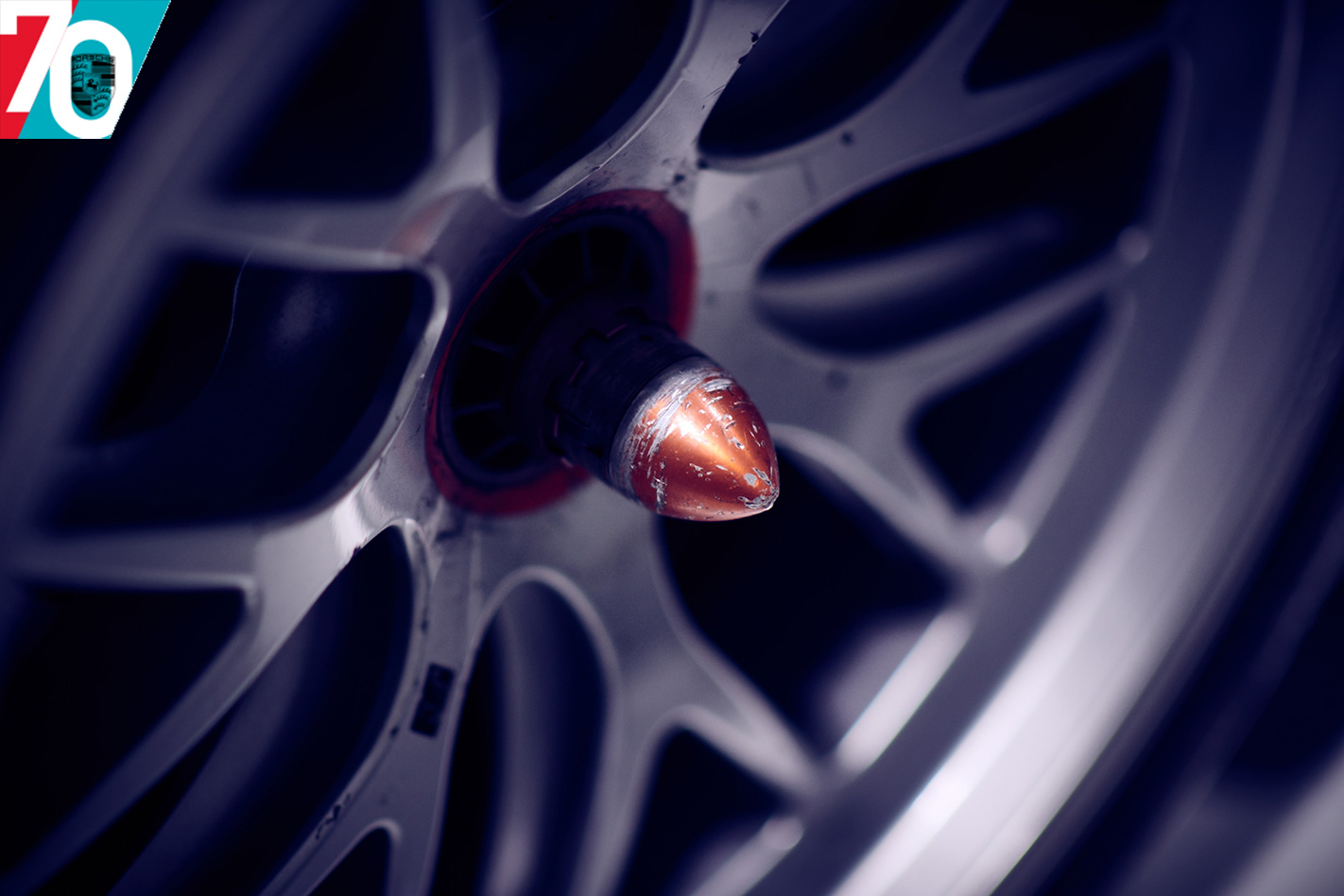
Just opposite is a 956 mounted upside down, illustrating the fact that this car makes enough downforce at 321.4km/h to stick it to the ceiling. Theoretically. There’s Bjorn Waldegard’s Safari Rally 911 SC, complete with dings in the front bar that tell of some unfortunate creature meeting its maker. The casually knotted bungee holding the first aid kit in place on the parcel shelf is but one charmingly human aspect to these cars. Look inside the 1962 Typ 804, Porsche’s only fully in-house Formula 1 car, and you can see the light scratches on the gear lever caused by Dan Gurney’s wedding ring as he piloted the car about the pits.
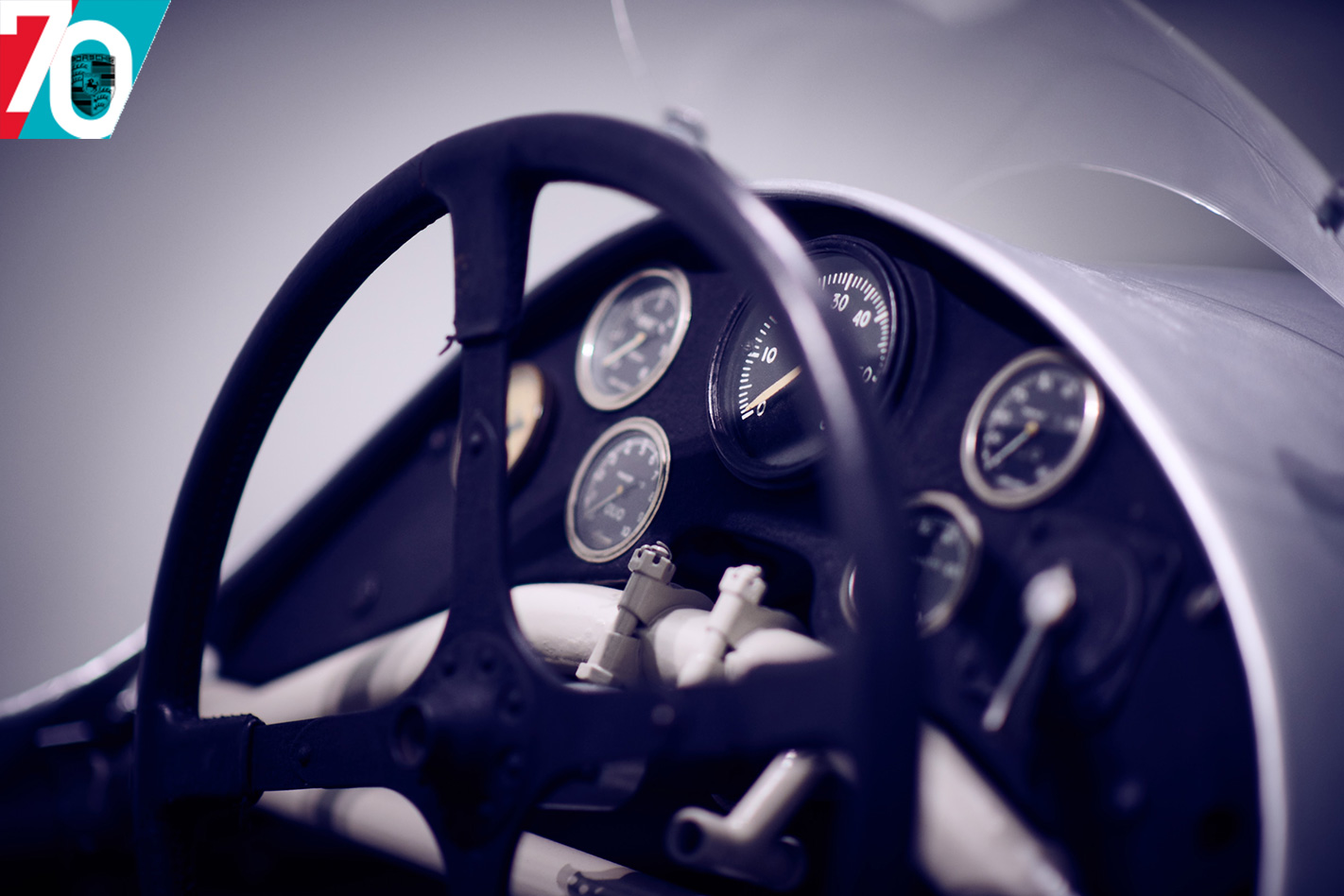
The big-ticket racers like the 956, the 917 and the achingly beautiful 908 are all well documented. A more fascinating aspect of the museum is the weird and wonderful, the cars that never made production or were one-off gifts. The very first 911 Turbo was a present to Louise Piech for her 70th birthday. You have to stop for a moment to let that one sink in. This one-off, narrow-body 911 Turbo, the archetypal scary road car of the 1970s was given to a 70-year-old woman as a birthday gift? Likewise one of only two eight-cylinder 914s ever built is on display, a gift to Ferry Porsche on his 60th. With 221kW at its elbow, this little thing, built in 1969, must have been seriously rapid, its output only being eclipsed by the introduction of the 3.3-litre turbo version of the 911.
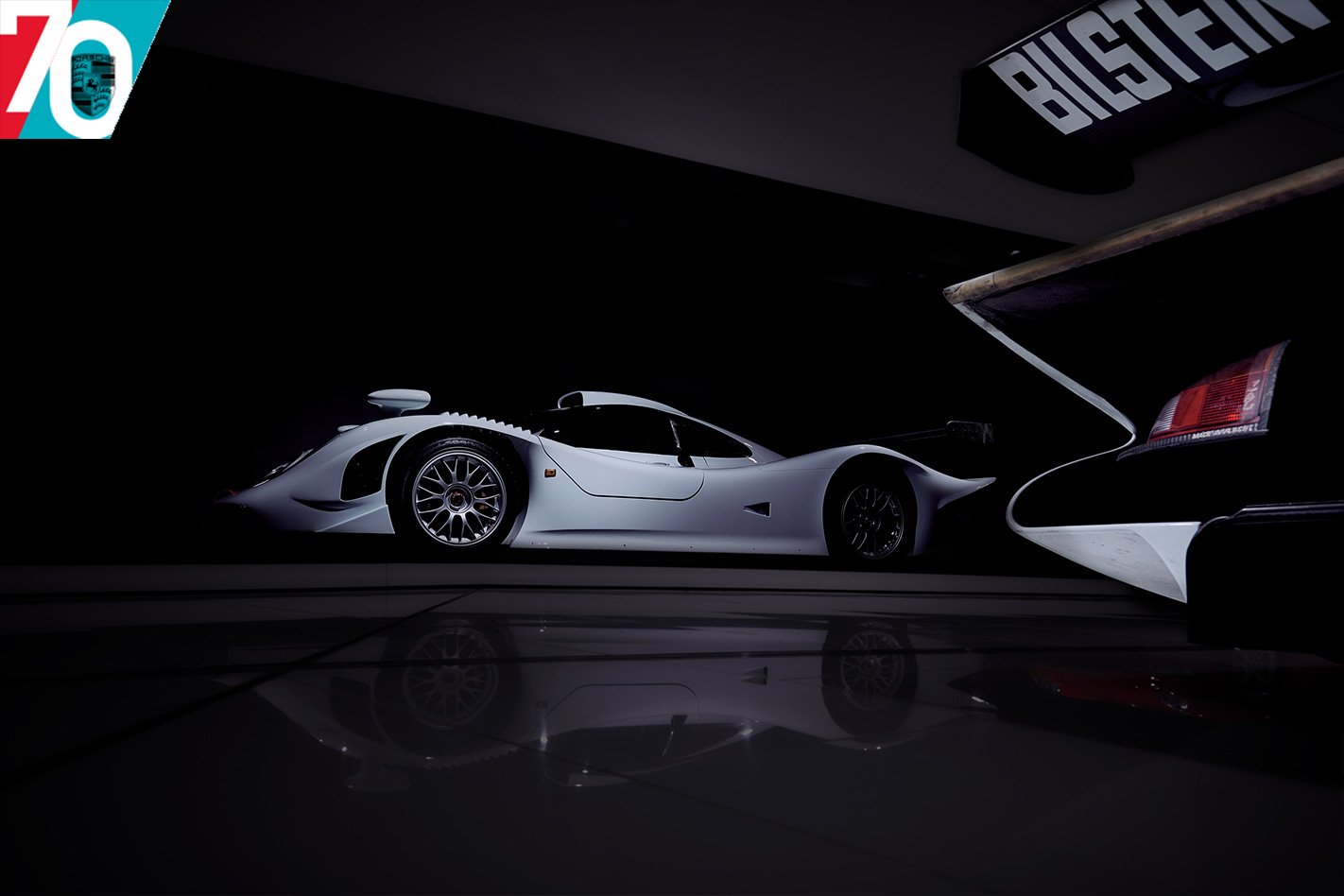
There are cars here that are like trick questions for Porsche fans. The Porsche 968 Club Sport Cabriolet, for example. Or how about the 1981 911 Turbo 4×4 Cabriolet. Yep, this G-series is the first rear-engined Porsche with all-wheel drive as well as being the first 911 cabriolet. Finished in pearl white with pearl white leather, it used a shortened 928 prop shaft to bring torque to an adapted 911 Turbo diff on the front axle. This engineering study proved an evolutionary dead end, a pearl white elephant, but it’s utterly intriguing nevertheless.
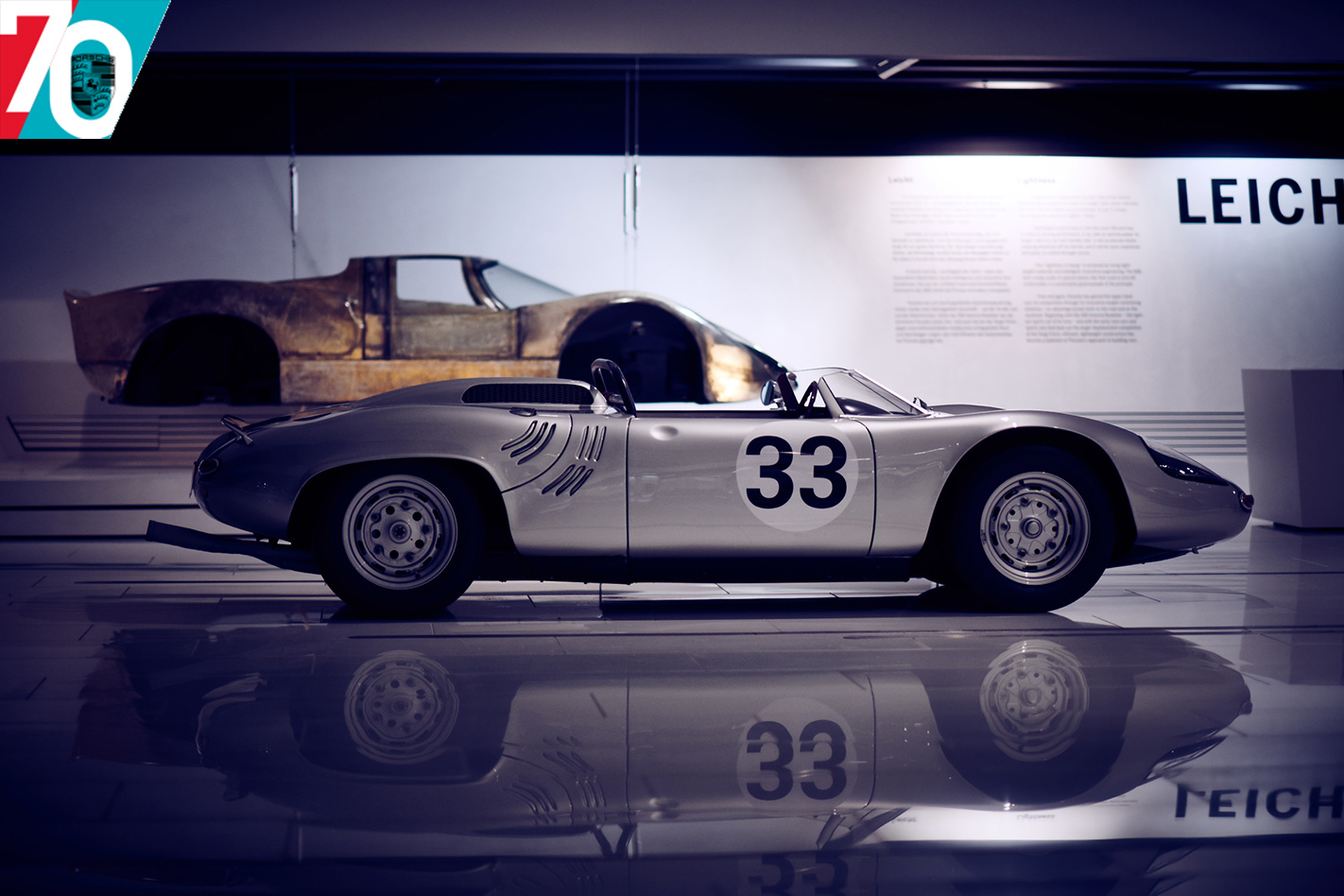
There’s so much here to stop you in your tracks. I don’t know a great deal about Rolf Stommelen, but I know that in 1968, this unbelievably brave German gent strapped himself into a 909 Bergspyder hillclimbing car that weighed 384kg, thanks to its thin plastic shell, beryllium brake discs and aluminium frame, which appeared to have the crashworthiness of a bathtub. The tiny eight-cylinder 1981cc engine behind his head made 202kW for a power-to-weight figure of 526kW/tonne, better than something like a Bugatti Veyron Super Sport.
Behind the Bergspyder is the 917 PA Spyder, a giant white receptacle for a normally aspirated flat-16 engine, the driver propped ahead of it seemingly as an afterthought. Unsurprisingly, this one never made it beyond the test facility at Weissach. Running on a mezzanine above is the ugly mug’s ball, a series of five cars that were never going to win any beauty contests. The Porsche 915 Pininfarina Holzmodell is probably the most ungainly; a 1969 attempt to build a long-wheelbase 911 sedan. Think of it as the Panamera’s great grandad.
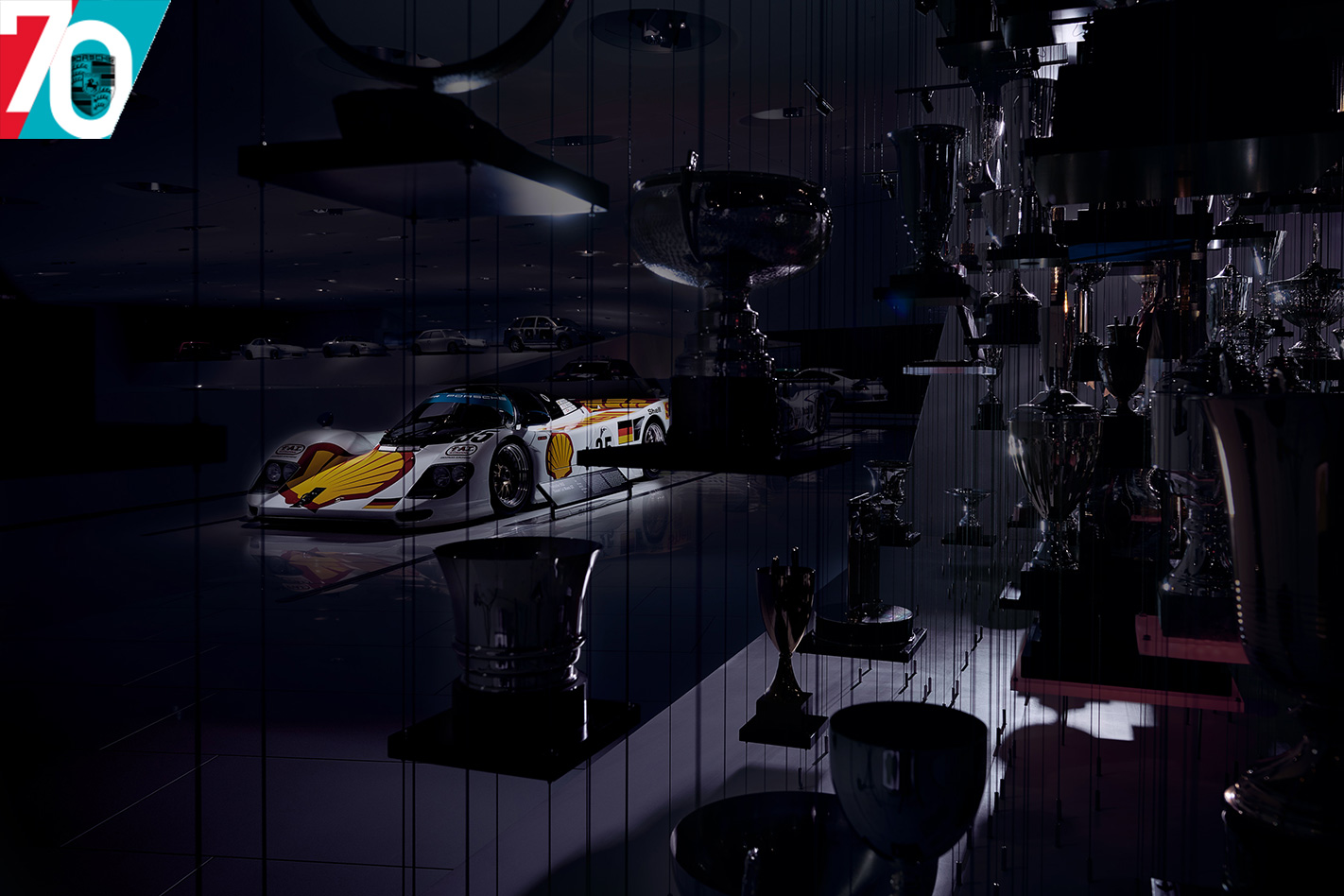
Next to it is the rough-edged and strangely proportioned 924 Weltrekordwagen, an abortive attempt to set a world mark of 250km/h for 10,000 miles. The 984 Prototyp is the forerunner to the Boxster, although this bug-eyed 1984 design study possessed none of the elegance and drama of Grant Larson’s Boxster Concept that debuted in Detroit in 1993. The decline in the US dollar and subsequent collapse of Porsche sales did for the 984.
For all the glamour here, my eye is drawn to possibly the cheapest car in the museum; a simple green 924. I walk around the thing and suddenly I’m a nine-year old kid in Marina di Massa, Italy, repeatedly pestering the local dealer for a brochure. He stonewalled me every time. Visiting the showroom for yet another try, I noticed he’d gone out back and left the carousel of glossy brochures unattended. I grabbed one and ran, but only managed to run fill tilt into the plate glass window in my haste to escape. As I came round with the dealer principal and his receptionist clucking over me, I finally got to keep my brochure. Every visitor will have their own personal Porsche memories, even if not all will be clouded by concussion, but that’s part of the charm of this place. For a moment, you’re a child again, filled with giddy wonder. I’m not going to spoil all the surprises because, if you’re one of us, you need to make the pilgrimage to this slightly scruffy suburb of Stuttgart once in your life.
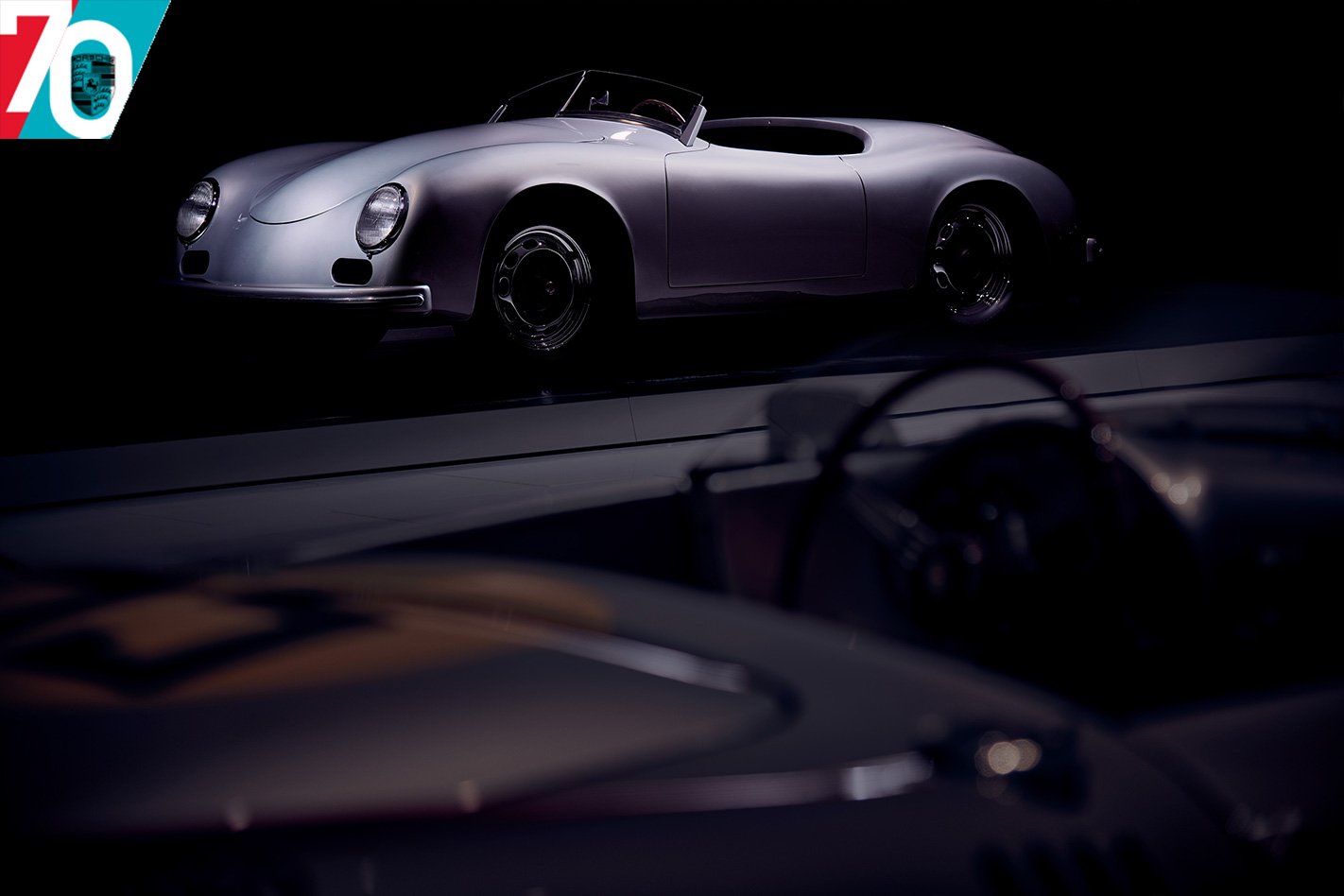
We finally turn to leave, departing via the workshop in the basement, where we spot a 935, the 959 Paris Dakar winner and the 2708 IndyCar all awaiting a bit of restorative TLC from Porsche’s master technicians. We step outside into the cold night air, the massive factory opposite having sent so many of these cars around the world and then welcomed them back into retirement, back home here in Zuffenhausen once circumstance and serendipity had rendered them too valuable to drive.
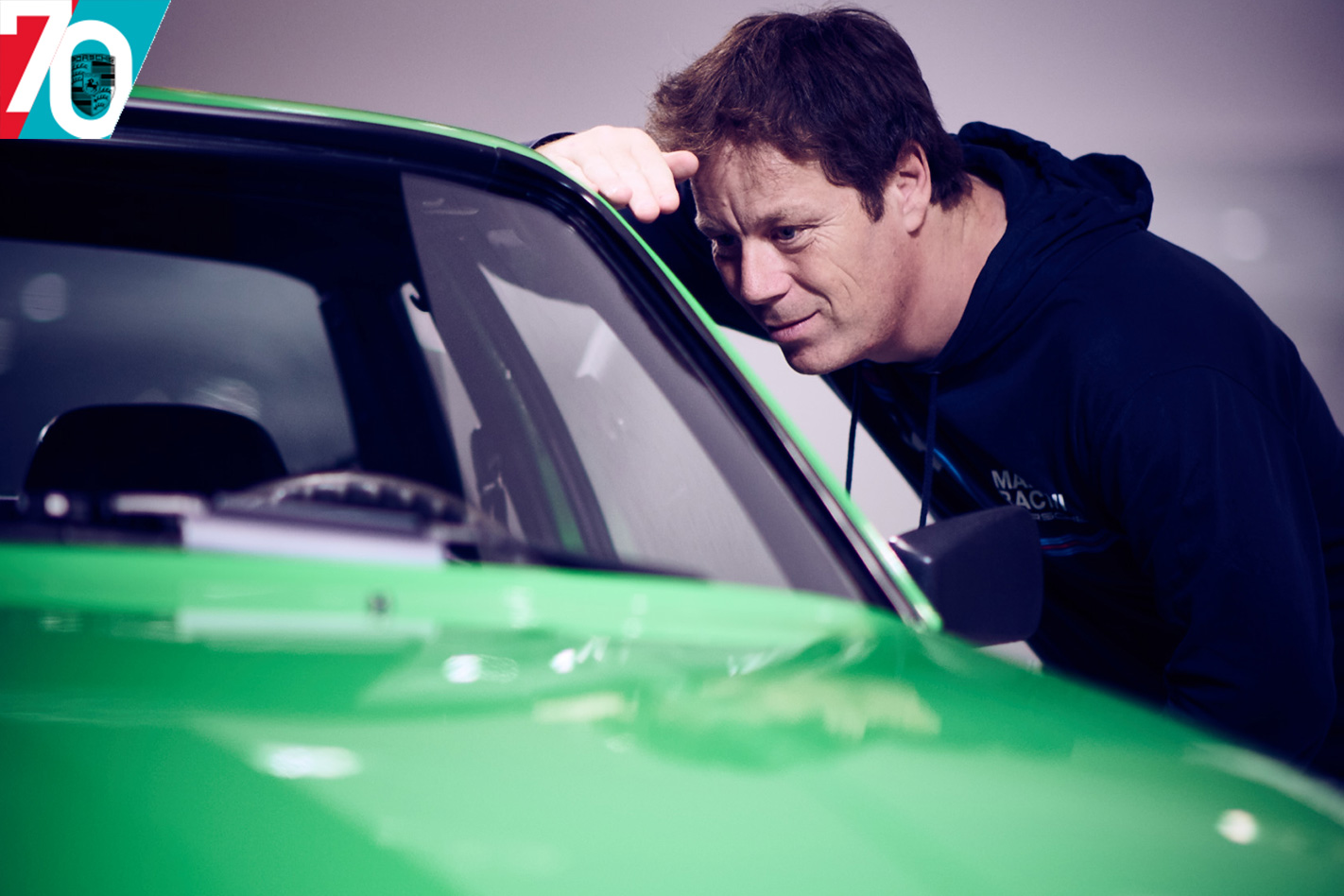
I’m not sure how I feel about embalming them in perpetuity. It saddens me a little that their days of fuel and fury are behind them. We get into our taxi as a camouflaged Mission-E supercar slinks across the yard in the factory behind us. It’s as silent as a tomb in the museum but across the road Porsche is busy building a new history.


